Strawberry Mochi Recipe (Ichigo Daifuku) – Strawberry mochi is a popular Japanese dessert that has captured the hearts and taste buds of many people. This scrumptious dessert exemplifies Japan’s rich culinary history and the art of making delectable delights. In this post, we will look at what is strawberry mochi / daifuku , how do you eat mochi or daifuku, and the greatest flavor possibilities. We’ll also get into the intriguing subject of whether daifuku is served hot or cold. In addition, we’ll deconstruct the delicate flavor of this Japanese delicacy, give a recipe, and show you how to make your own strawberry mochi.
Strawberry Mochi Recipe (Ichigo Daifuku)
What is Strawberry Mochi ?
Strawberry mochi, or ichigo daifuku in Japanese, is a popular Japanese dessert that consists of a soft and chewy mochi crust filled with a sweet red bean paste and a whole strawberry. It’s a popular springtime delicacy because strawberries are at their optimum during this time of year. The sweet and slightly sour strawberry, smooth and creamy red bean paste, and soft and chewy mochi combine to produce a pleasant flavor and textural experience.
Strawberry mochi is thought to have first appeared in Japan in the early twentieth century. A confectioner in Tokyo is claimed to have come up with the idea of combining mochi with strawberries while trying to develop a new form of wagashi, or Japanese sweets. The dessert was an instant hit, and it quickly spread throughout Japan.
Strawberry mochi is becoming a popular snack and dessert for people of all ages. It is frequently served at tea ceremonies and other special events. It is also a popular gift because it is regarded as a symbol of good fortune and pleasure.
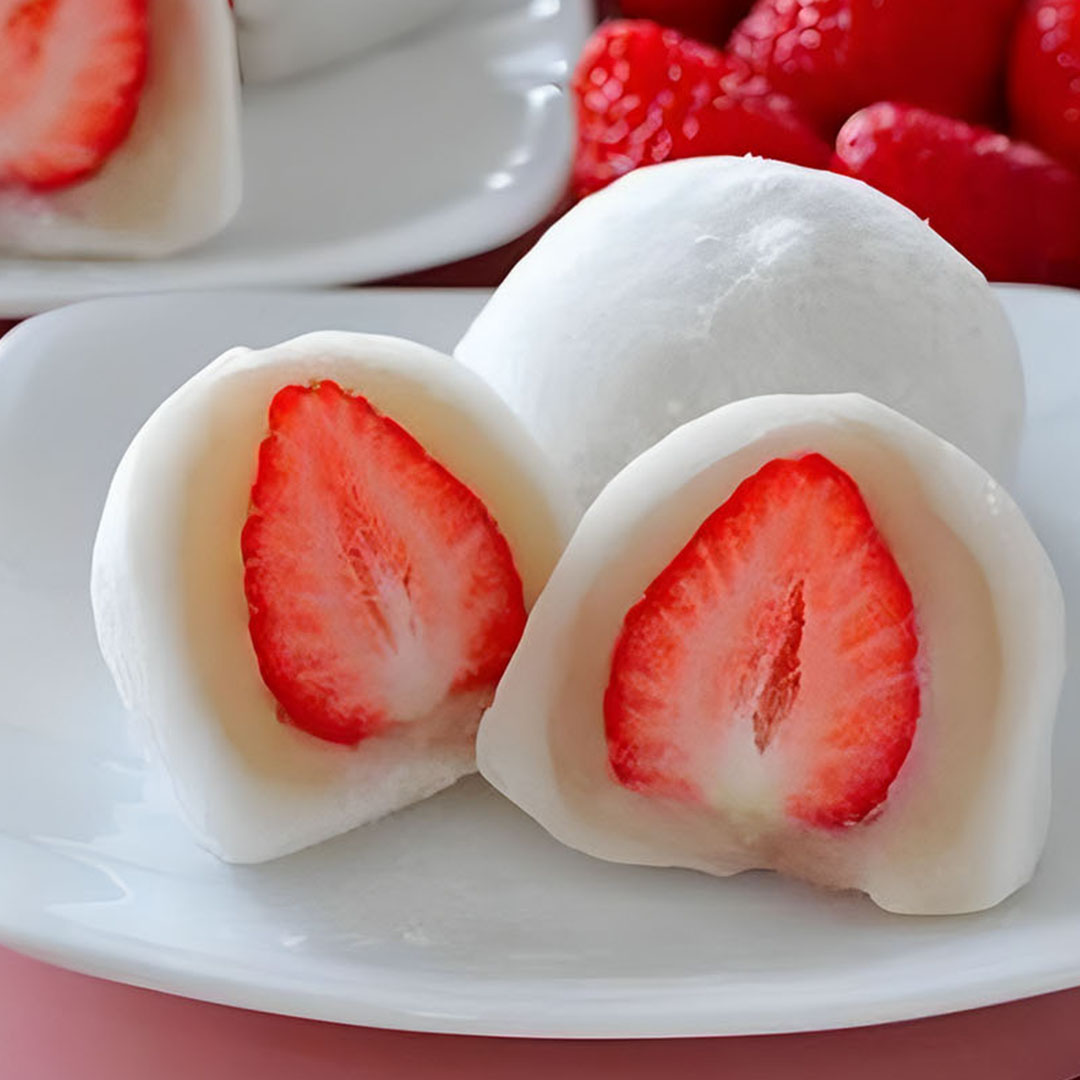
The Best Flavors for Mochi
The greatest flavor for mochi is a personal preference, and there are various delectable options to select. Here are a few popular flavors that a lot of people like:
- Ichigo Daifuku (Strawberry Mochi): This is a popular and classic daifuku version. It consists of a full strawberry wrapped in soft, chewy mochi and smothered in sweet anko (sweet red bean paste). A lovely contrast of flavors and sensations is created by combining the juicy, fresh strawberry with the sweet and slightly nutty anko.
- Matcha Daifuku: Another favorite is matcha (green tea) mochi or daifuku. It has an anko filling that has been lightly seasoned with matcha powder, which gives it a nice bitterness and a vivid green hue. The earthy matcha taste balances out the sweetness of the anko and the chewiness of the mochi.
- Yomogi Daifuku: Yomogi daifuku contains anko and yomogi leaves, which are popular for their herbal and slightly bitter flavor. The yomogi leaves give the anko filling a distinct flavor and a pleasing green hue.
- Mame Daifuku (Bean Daifuku): Mochi is filled with anko that contains entire sweet beans, often adzuki or other legumes in this variation. The beans give the mochi a lovely texture and an added layer of sweetness.
- Fruits & Cream Daifuku: Some current daifuku varieties include fillings such as sweetened whipped cream and fresh fruits like strawberries or mango. These daifuku have a creamy texture with a fruity freshness.
How Do You Eat Mochi or Daifuku?
Mochi is a lovely experience that should be savored for its unique combination of textures and flavors. Here’s how to eat mochi:
- Begin by gently removing the mochi or daifuku from its box. To keep mochi fresh, some may come individually wrapped in plastic.
- Clean Your Hands: Mochi is usually eaten with your fingers, so make sure your hands are clean. It’s a hands-on experience.
- Take a little bite: Mochi has a soft, chewy mochi exterior with a sweet filling inside. Take a small bite to sample the mochi and filling combination. The mochi should be pleasantly chewy, with a burst of flavor and sweetness from the filling.
- Enjoy it: To truly experience the contrasting textures and flavors, chew slowly. The chewiness of the mochi and the sweetness of the filling work well together.
- Repeat: Take little bits, savoring each one, until you’ve finished the daifuku.
- Daifuku works well with green tea, which can help cleanse your palette in between mouthful. Green tea’s moderate bitterness enhances the sweetness of the daifuku.Remember that daifuku should be consumed slowly and deliberately. Its unique and wonderful combination of chewy mochi and sweet filling. Take your time enjoying a classic strawberry daifuku, matcha-flavored daifuku, or any other variety of this popular Japanese treat.
Is Strawberry Mochi Served Hot or Cold?
Mochi or Daifuku is traditionally served cold or at room temperature rather than hot. Mochi is a delicious delicacy because of the contrast between the soft, chewy mochi and the cool or fresh filling, such as a juicy strawberry or sweet anko (red bean paste).
Serving mochi at room temperature or cooled helps to preserve the mochi’s ideal texture and overall sensory experience. The filling retains its original texture and flavor, and the combination of textures and flavors is most enjoyed at these temperatures.
While room temperature or cold mochi or daifuku is the typical and most popular way to consume this Japanese dessert, there are inventive versions that include warm or newly produced mochi. These variants, which are frequently found in contemporary fusion sweets, can deliver a unique yet equally delectable experience. The classic daifuku, on the other hand, is often served chilled or at room temperature.
How does Strawberry Mochi Taste?
Strawberry mochi is a lovely Japanese dessert with a pleasing combination of flavors and textures. The gorgeous and juicy strawberry in the middle and the anko (sweet red bean paste) that envelops it contribute to the deliciousness of strawberry mochi or daifuku. The sweetness is well-balanced and does not overpower. The soft, chewy, and slightly sticky mochi exterior contrasts nicely with the soft and gorgeous strawberry core. Fresh strawberries offer a vibrant and delicious flavor that complements the overall sweetness.
The anko, prepared from cooked adzuki beans, gives a subtle umami element to the flavor profile, complementing the sweetness and adding depth. A layer of plain mochi, which can impart a subtle nutty flavor from the sticky rice, may be included in some variants. Strawberry mochi is a popular and delicious dish in Japanese cuisine due to the combination of these flavor ingredients.
More Desserts Recipes
Looking for more desserts recipes? Here are some of my favorites:
How to Make Homemade Strawberry Mochi (Ichigo Daifuku)
Now let’s get into the recipe and how to make strawberry mochi.
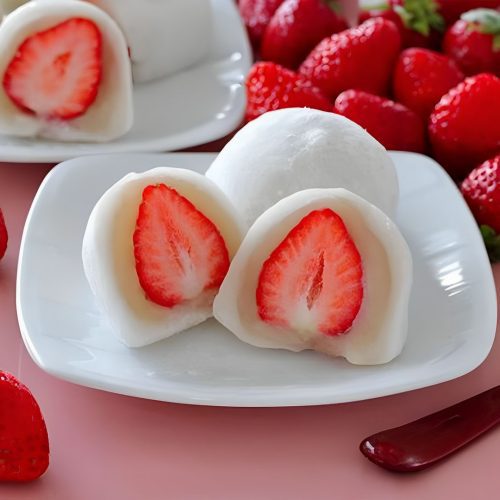
Strawberry Mochi Recipe (Ichigo Daifuku)
Equipment
- Steamer
- Mixing Bowls
- Microwave or stovetop for cooking the mochi
- Plastic wrap or parchment paper
- Rolling Pin
- Knife
Ingredients
- 1 cup Glutinous rice flour (shiratamako or mochiko)
- 1/2 cup Sugar
- 3/4 Water
- 12 Fresh strawberries
- Anko (sweet red bean paste)
- Potato starch or cornstarch for dusting
Instructions
Prepare the Mochi Dough
- Combine 1 cup sticky rice flour (shiratamako or mochiko) and 1/4 cup sugar in a mixing bowl.
- While whipping, gradually add 3/4 cup of water to get a smooth, thick slurry.
Cook the Mochi
- Wrap the bowl in plastic wrap and microwave on high for 2-3 minutes, or until the dough becomes transparent and pliable.
- You may also cook the dough on the stovetop by placing it in a nonstick skillet over low heat and stirring constantly until it reaches the proper consistency.
Shape the Mochi
- To prevent sticking, dust a clean surface or a wide piece of plastic wrap with potato starch or cornstarch while the mochi is still warm.
- Place the mochi on the surface and flatten it with a rolling pin into a thin, rectangular form.
Prepare the Filling
- Take fresh strawberries and remove the stems, leaving them whole.
Assemble the Daifuku
- Make sure the mochi squares are large enough to wrap around the strawberries.
- Fill each mochi square with a little amount of anko (sweet red bean paste).
- On top of the anko, place a strawberry.
Wrap and Seal
- Pull the mochi's corners gently over the strawberry and anko, closing it at the top.
- Make sure the mochi completely covers the filling.
Conclusion
Finally, making the ideal Strawberry Mochi at home is a rewarding activity that brings the flavor of Japanese dessert culture to your kitchen. Strawberry Mochi delivers a gastronomic trip that captivates both the palette and the soul, from the initial enticement of its delightful taste to the pleasurable process of constructing each piece. With this simple recipe, you can go on a pleasant adventure of making handmade Strawberry Mochi, ensuring that each bite is a celebration of sweetness and texture. Elevate your dessert experience by sharing the joy of this delectable dish with family and friends, creating memories that will linger on the tongue and in the heart. Also don’t forget to visit our Facebook or Pinterest.
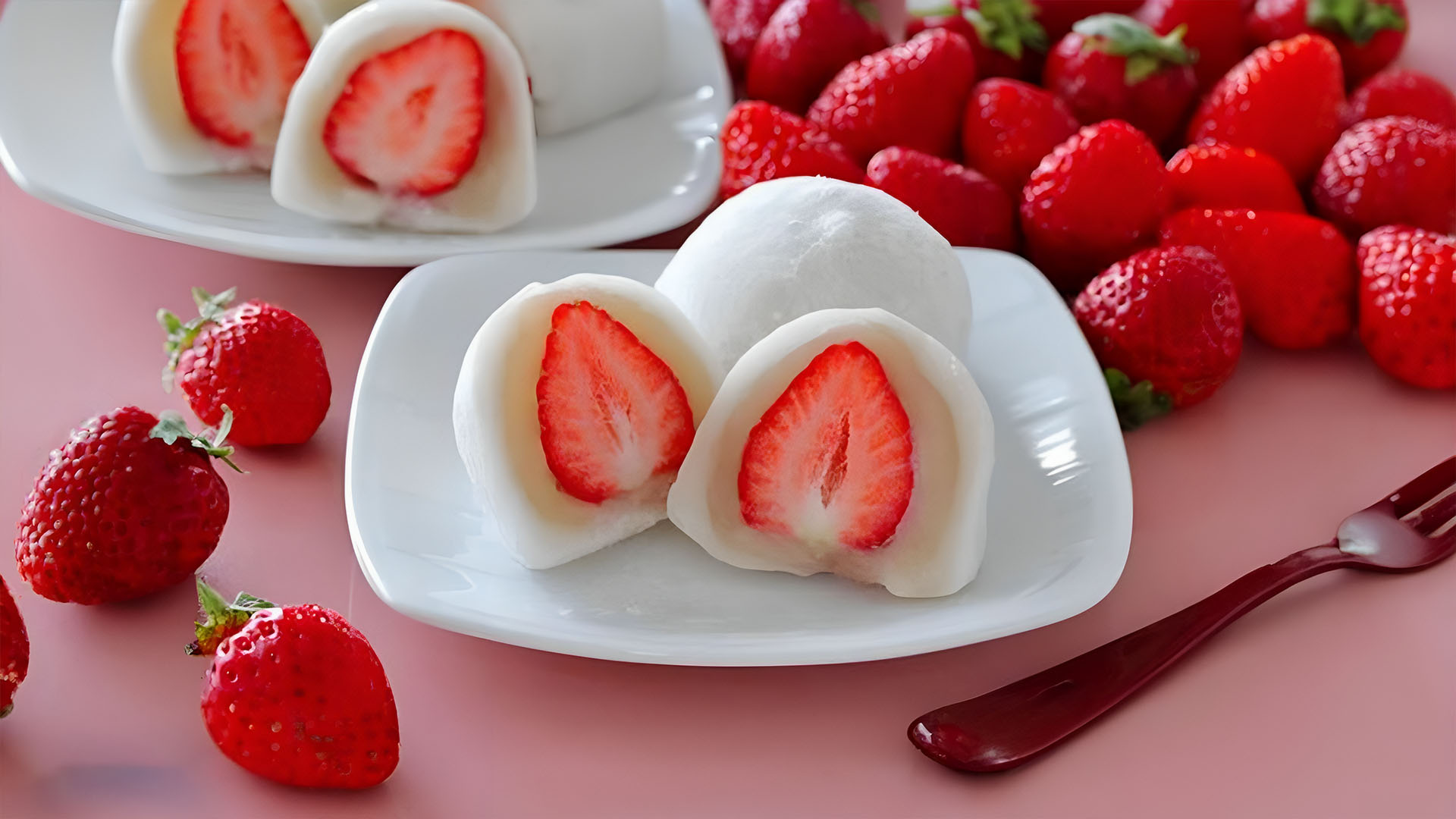

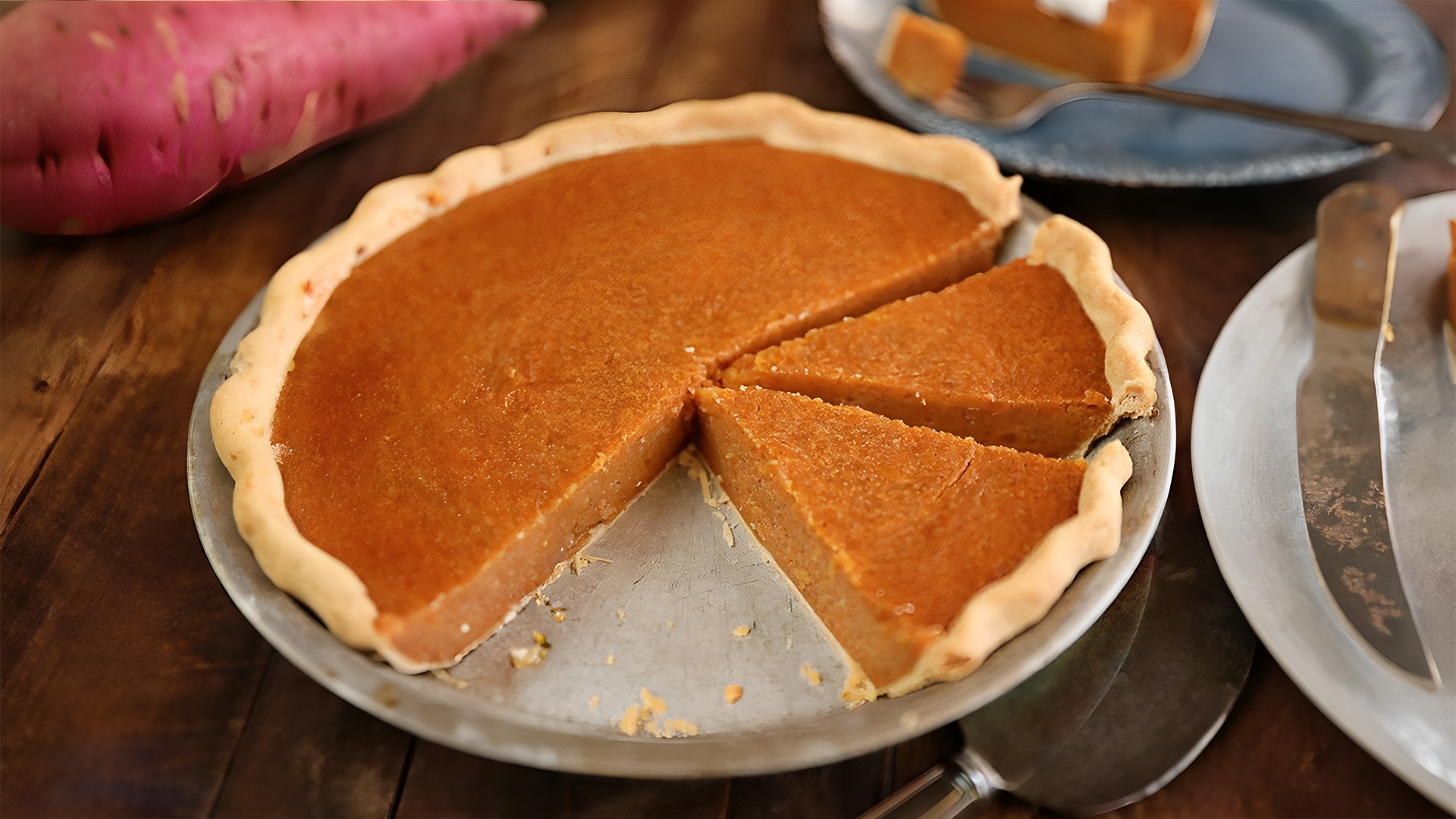
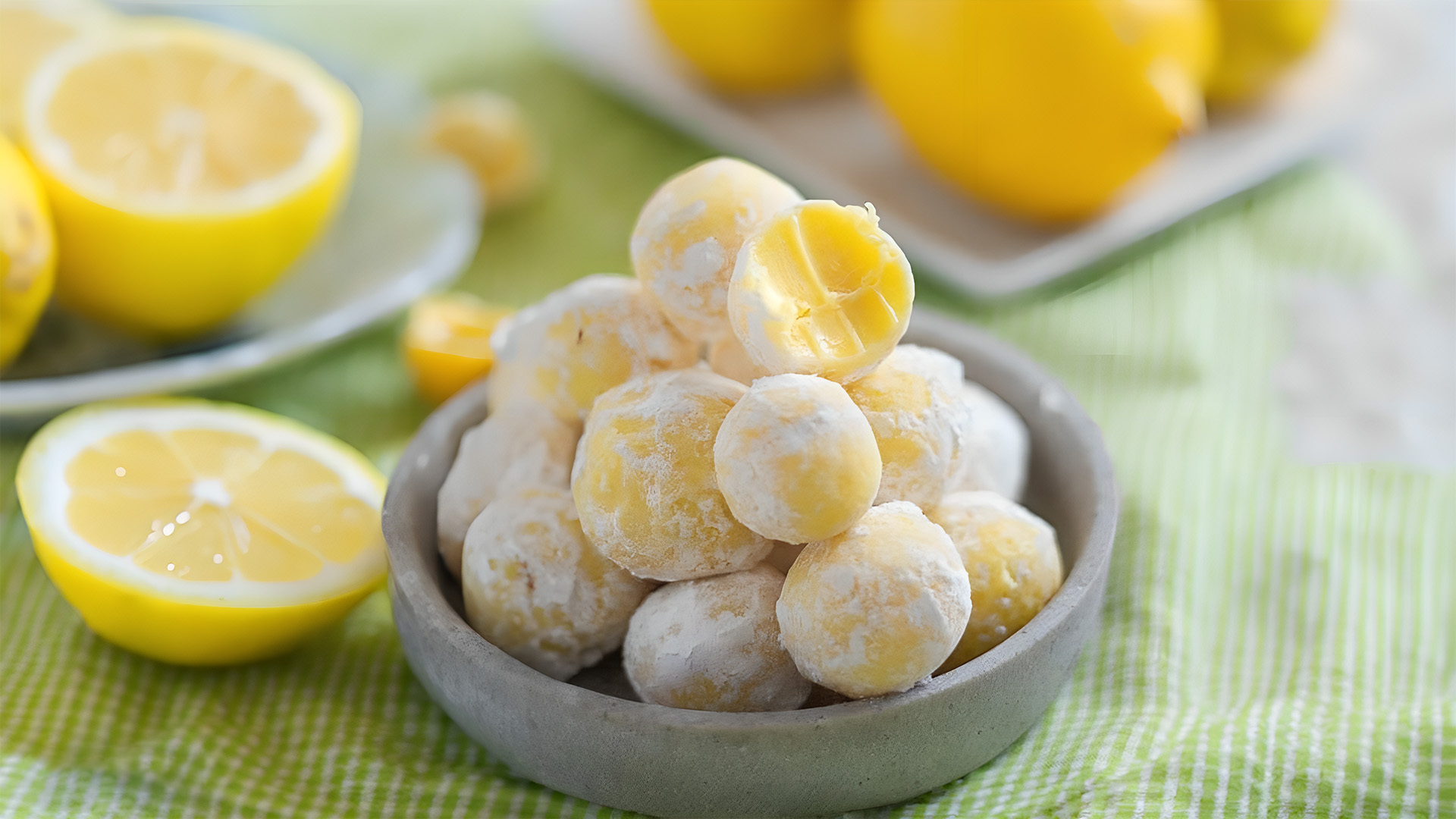






Leave a Reply